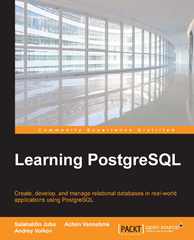Question
I need a matlab code to implement tne rest of the project without using any of the matlab image processing toolbox or presettings. # count
I need a matlab code to implement tne rest of the project without using any of the matlab image processing toolbox or presettings.

| # count the new grey level in position(i,j) | |
| def spatial_filtering(i, j): | |
| # create a s*s array to represent the pixels that have | |
| # influence on position(i,j)'s new grey level | |
| array = [[(0,0)] * s ] * s | |
| average = 0 | |
|
| |
| # count the coordinate of the s*s pixels | |
| for a in range(s): | |
| for b in range(s): | |
| x = i + dis[a] | |
| y = j + dis[b] | |
|
| |
| # if the pixel's position is out of the image's range | |
| # set it to the boundary's value | |
| if(x | |
| x = 0 | |
| if(y | |
| y = 0 | |
| if(x >= width): | |
| x = width - 1 | |
| if(y >= height): | |
| y = height - 1 | |
|
| |
| # keep the array for better understanding, it can be deleted | |
| array[a][b] = ( x, y ) | |
| #count the average of the s*s pixels' grey level | |
| average += data[array[a][b]] | |
|
| |
| average = average / (s * s) | |
|
| |
| #return average | |
| return average | |
|
| |
| # open an image and get its information | |
| im = Image.open('Fig0219(rose1024).tif') | |
| data = im.load() | |
| width, height = im.size | |
| MN = width * height | |
|
| |
| # new two blank images for rewrite and downsampling | |
| resultImage = Image.new('L',(width, height), 'white') | |
|
| |
| # count the frequency of each grey level | |
| s = input('please input size: ') | |
| dis = [0] * s | |
|
| |
| for c in range(s): | |
| dis[c] = c - (s / 2) | |
|
| |
| # draw the new HE image | |
| draw = ImageDraw.Draw(resultImage) | |
|
| |
| #width = height = 10 | |
| for i in range(width): | |
| for j in range(height): | |
| # for each pixel, find its corresponding grey level after HE | |
| p = spatial_filtering(i, j) | |
| draw.point((i, j), p) | |
|
| |
| filename = 'SFImage_rose_blursize=' + str(s) + '.bmp' | |
|
| |
| #save the output files | |
| resultImage.save(filename, format='BMP') |






Step by Step Solution
There are 3 Steps involved in it
Step: 1

Get Instant Access to Expert-Tailored Solutions
See step-by-step solutions with expert insights and AI powered tools for academic success
Step: 2

Step: 3

Ace Your Homework with AI
Get the answers you need in no time with our AI-driven, step-by-step assistance
Get Started


